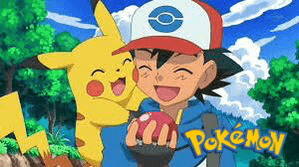What’s the Secret to Pokémon's Success after So Many years?

1996 is the year that the little cuddly monsters called Pokémon first appeared on everyone’s favorite Game Boy. The title was a labor of love created and slaved over by famed designer Satoshi Tajiri, who, as legend has it, was inspired by his childhood hobby of collecting insects.
So why has Pokémon continued to dominate for so long while other would-be franchises (Bubsy the Bobcat, anyone?) died with a whimper? While opinions may run rampant on the subject, here are five cogent arguments that should help explain Pokémon’s global domination.
Pokémon Games are the Swiss Army Knife of video games
Pokémon was more than a simple handheld game featuring colorful monsters. It was a fresh take on the role-playing genre. It was also arena combat. Then there was the strategy element. And if this wasn’t enough, the game itself functioned as a sort-of virtual trading-card pastime—all the better to compliment the actual paper card game the franchise released.
With the help of a link cable, gamers could trade squirtles and magikarps ‘til their little hearts were content. And by releasing new characters to collect on every subsequent sequel, Nintendo not only grew the audience but ensured that rabid fans of Red, Green and Blue would come back for Gold and Silver, Crystal, Ruby and Sapphire, and beyond.
It’s social rather than “multiplayer”
In its own way, Pokémon even broke a barrier or two. When it came to multi-player, no longer were gamers playing side by side, but rather face to face, against one another, effectively recreating the home RPG experience sans 12-sided die. What’s more impressive is that Nintendo managed to achieve this on nothing more than an 8-bit handheld video game console.
playing side by side, but rather face to face, against one another, effectively recreating the home RPG experience sans 12-sided die. What’s more impressive is that Nintendo managed to achieve this on nothing more than an 8-bit handheld video game console.
But that was another genius move. Kids didn’t have to invite someone over for a Pokémon session on a bulky console—they could meet up at the ballpark, shopping mall or wherever and trade and do battle right from their handheld. This social element is one of the major factors that keeps gamers coming back to the franchise even today.
The characters do the selling
Developers of Pokémon rightly eschewed convoluted plot lines in favor of stories that supported a unique premise: training monsters to fight. The player’s primary goal from generation one to present is to search for Pokémon creatures, train them up, and pit them in battle. Sure, there have been some wild storylines in full 3D, such as “Pokémon XD: Gale of Darkness,” but catching Pokémon creatures has always been the game’s modus operandi, as well as doing battle and trading.
Focusing on this trade is what helped raise Pokémon above the standard entry in the RPG genre. But what kept momentum going were the new characters Nintendo released on every subsequent sequel. They smartly whetted the appetites of the gaming public by teasing new characters and encouraging trade with friends and strangers—all of which helped keep the fan base happy and eager for more.
It has become a well-oiled machine
One of the principal reasons Pokémon’s popularity endures is because those overseeing the franchise—The Pokémon Company International—think in generations as opposed to years. They focus on promoting the brand as a whole as opposed to any one release. For example, whenever a new Pokémon vide-game sequel hits the market, that title becomes a generation unto itself—and it incorporates all attendant manga, anime, trading cards, TV shows and movies.
These releases on various mediums don’t exist independently of each other—oftentimes the games, cartoons and cards incorporate elements that inform one another, making them all part of the same whole. The end result is a trans-media empire that keeps the name “Pokémon” front and center in the public consciousness.
Nintendo hasn’t screwed it up yet
The original “Pokémon Red and Blue” was a breath of fresh air on a handheld console known mostly for Mario games and “Tetris.” It bundled a unique premise, colorful characters and tight RPG gameplay in that imaginative way Japanese designers are known for the world over. It was a bona fide smash hit, and Nintendo could have left it at that. But instead of writing the title off as a one-hit-wonder, they saw the franchise potential and hurled the full weight of their marketing budget at the endeavor, creating the aforementioned Pokémon Company International.
On top of releasing the manga, anime and trading cards, they have continued to put out new generations of games from 1998 to present. And in all that time, Nintendo has never abandoned the bedrock principles of role-playing and social gaming that has made the franchise such a hit.
So that about sums up why Pokémon is still a household name.
While it’s true that reasonable people may disagree on the merits of one sequel compared to another, the overall quality is such that it has inspired fawning Top 10 lists of the kind not seen since Final Fantasy. It’s Nintendo’s commitment to sticking with what works that is surely responsible for Pokémon’s enduring popularity.

Comments